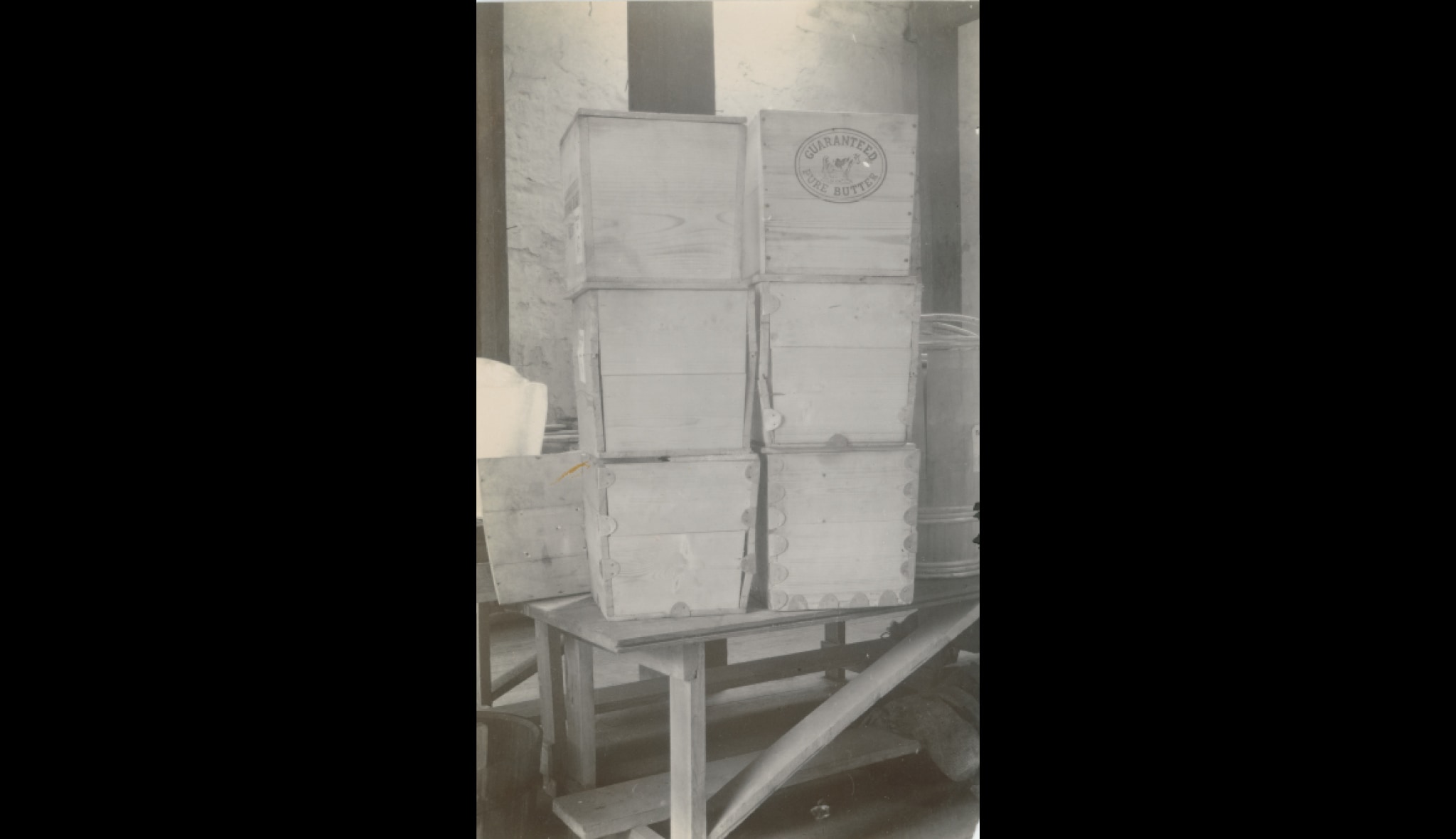
001 Butter Boxes; these 56lb boxes were the standard package for creamery butter for much of the 20th century.
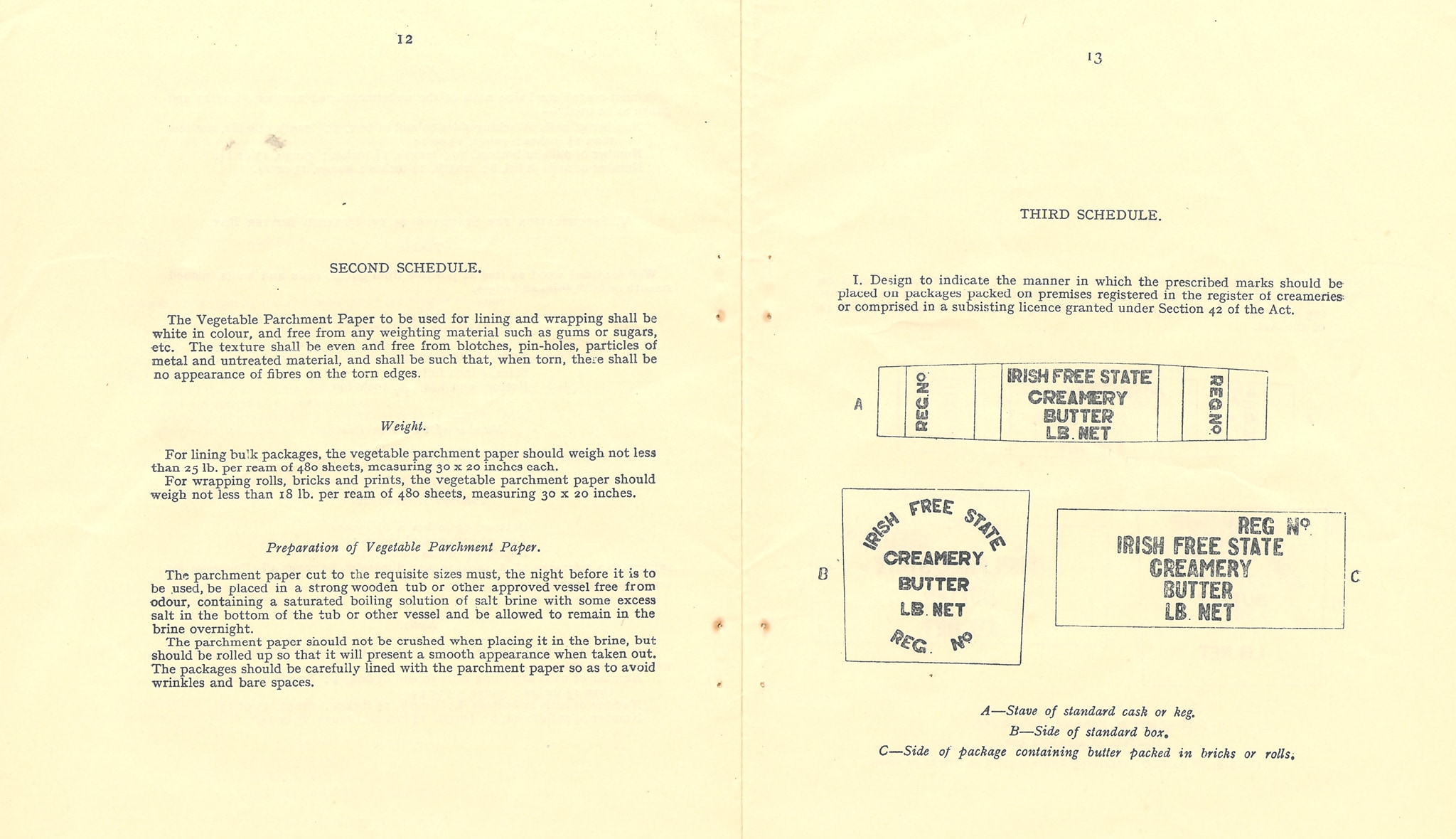
002 Pages from the 1925 Statutory Regulations governing the preparation of butter boxes. The packaging of butter was carefully regulated and inspected.
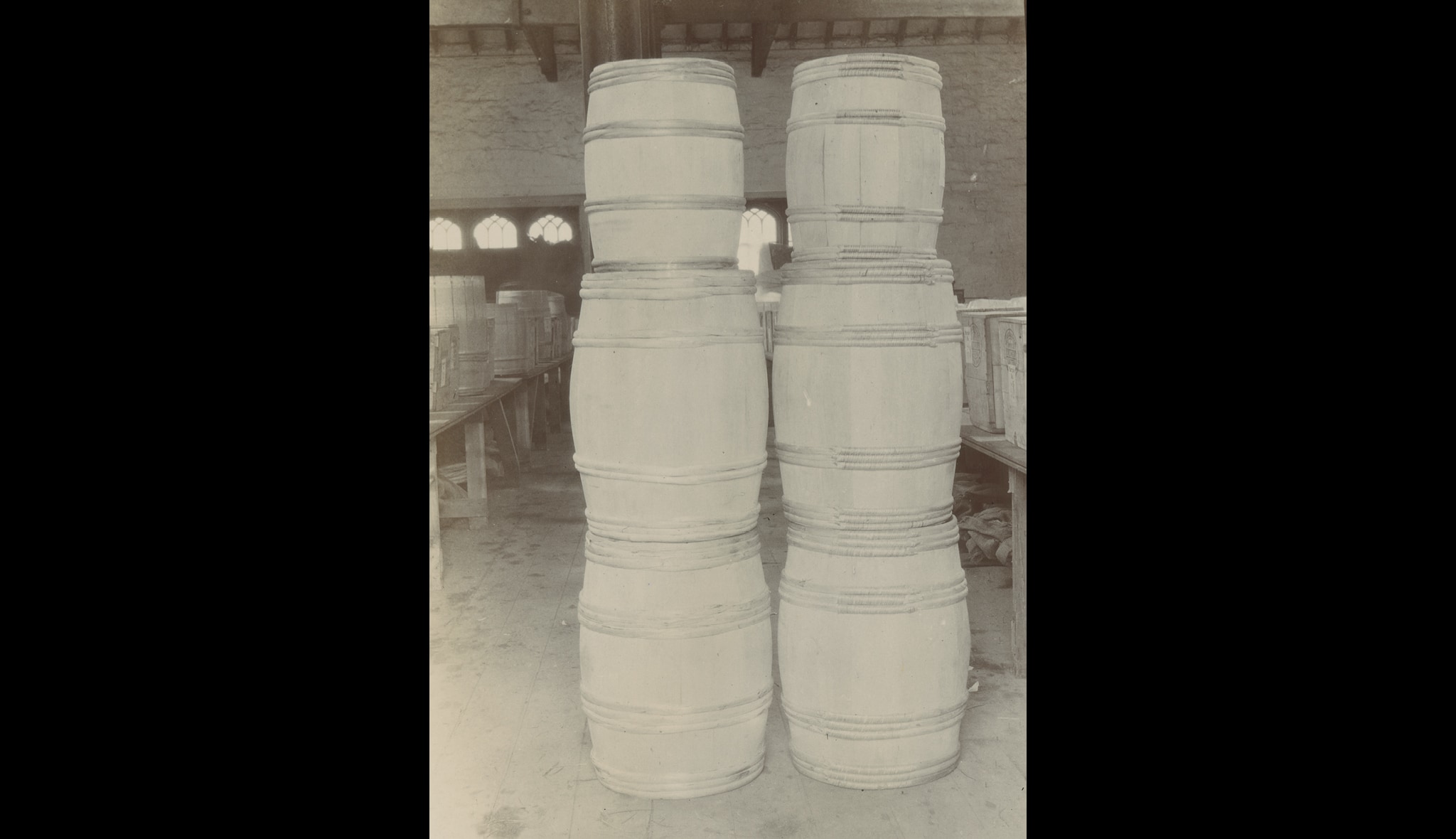
003 Firkins; these were the older type of butter packaging, used, for example, in the Cork Butter Exchange extraction of the butter. Note also the tap at the side of the churn to allow the butter milk.
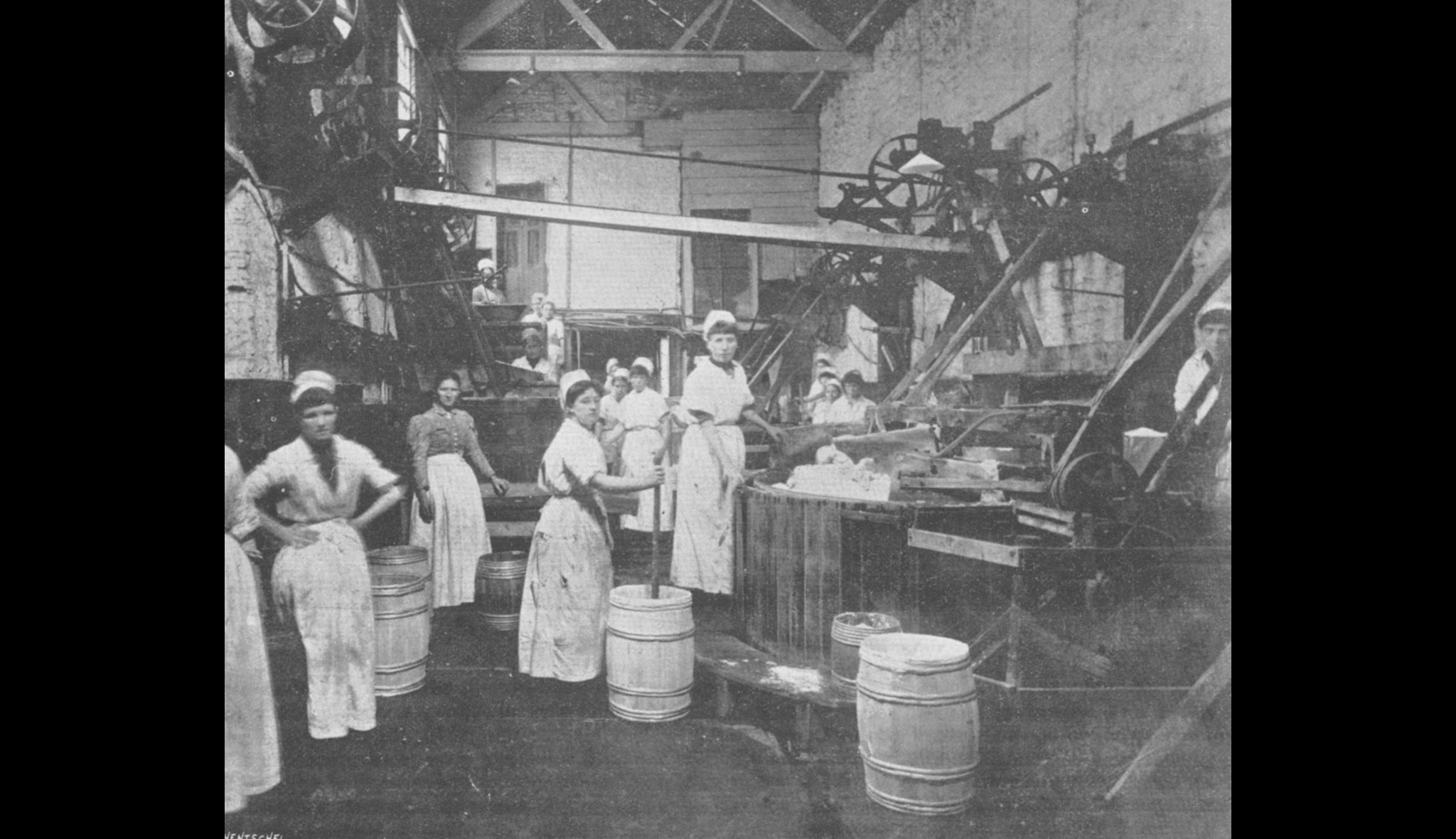
004 Packing a firkin at a butter works in Dunbar Street, Cork, early c20th
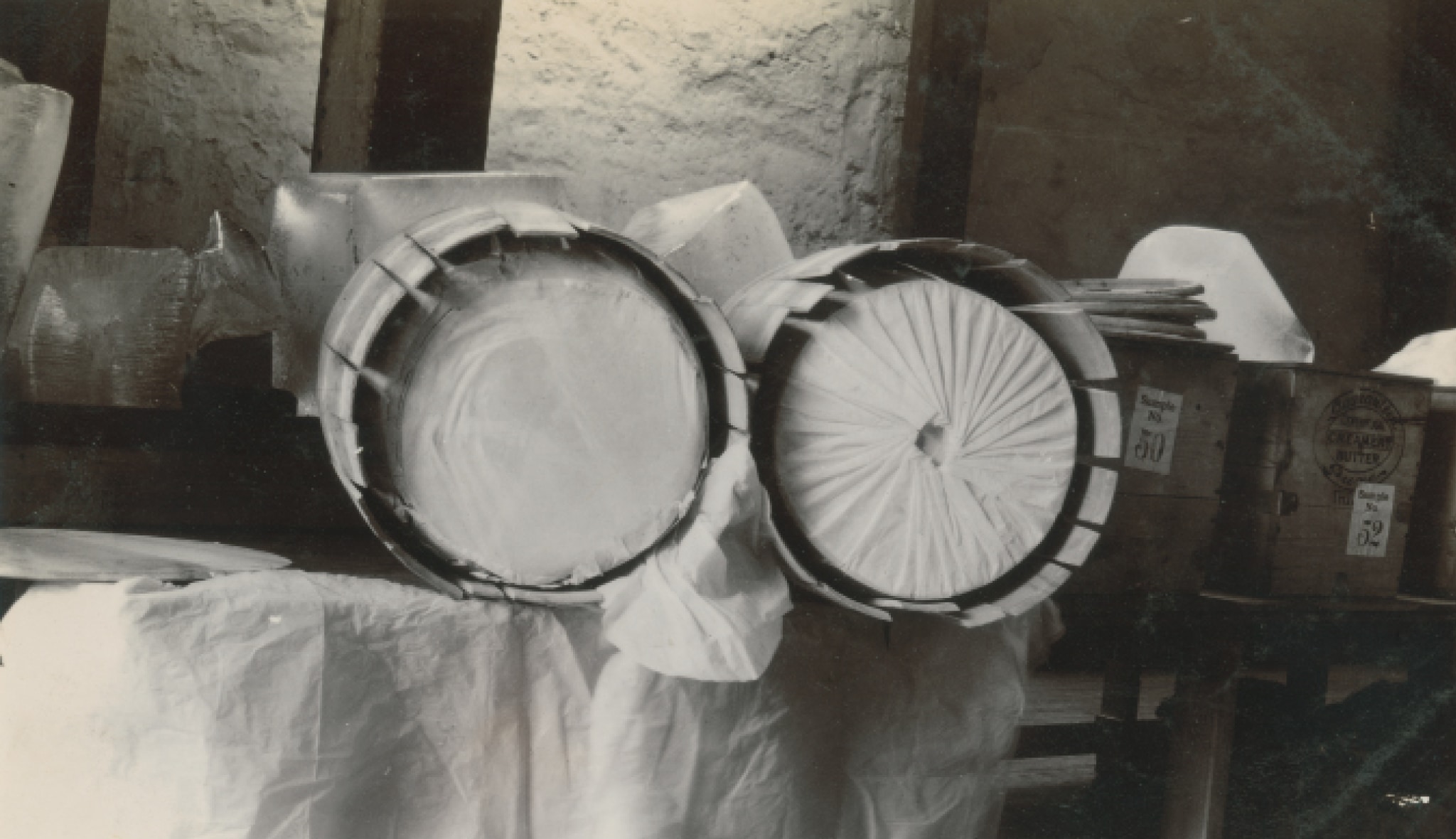
Left: 005 Butter in a firkin wrapped in vegetable parchment paper, as it should be done Timber could taint the flavour of the butter so the vegetable parchment was used to protect it.
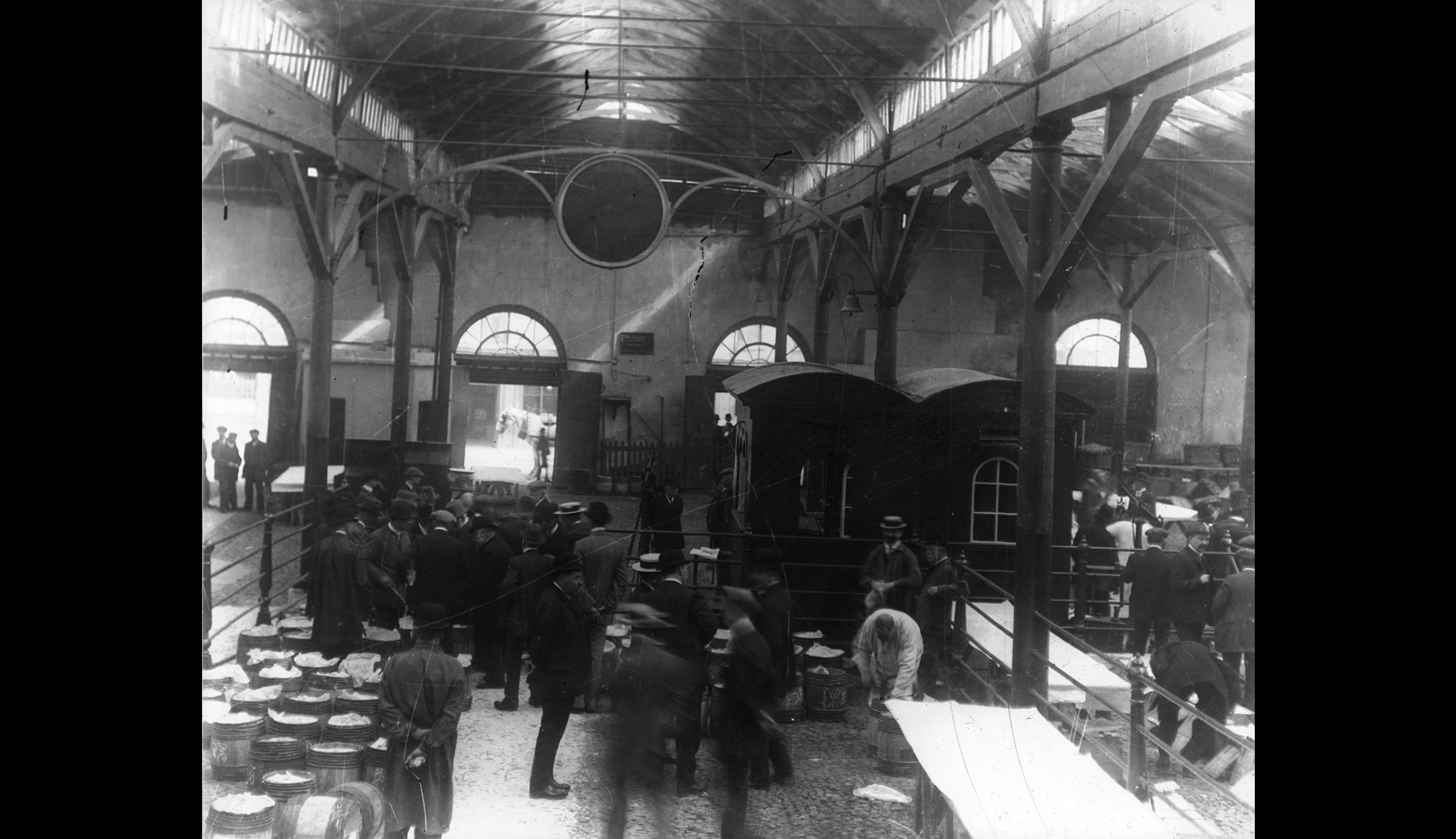
006 Visit of the British Dairy Association to the Cork Butter Market, April 1911. The use of firkins at this date was indicative of the failure of the Butter Market to adapt to changing times, something noted by the visitors.
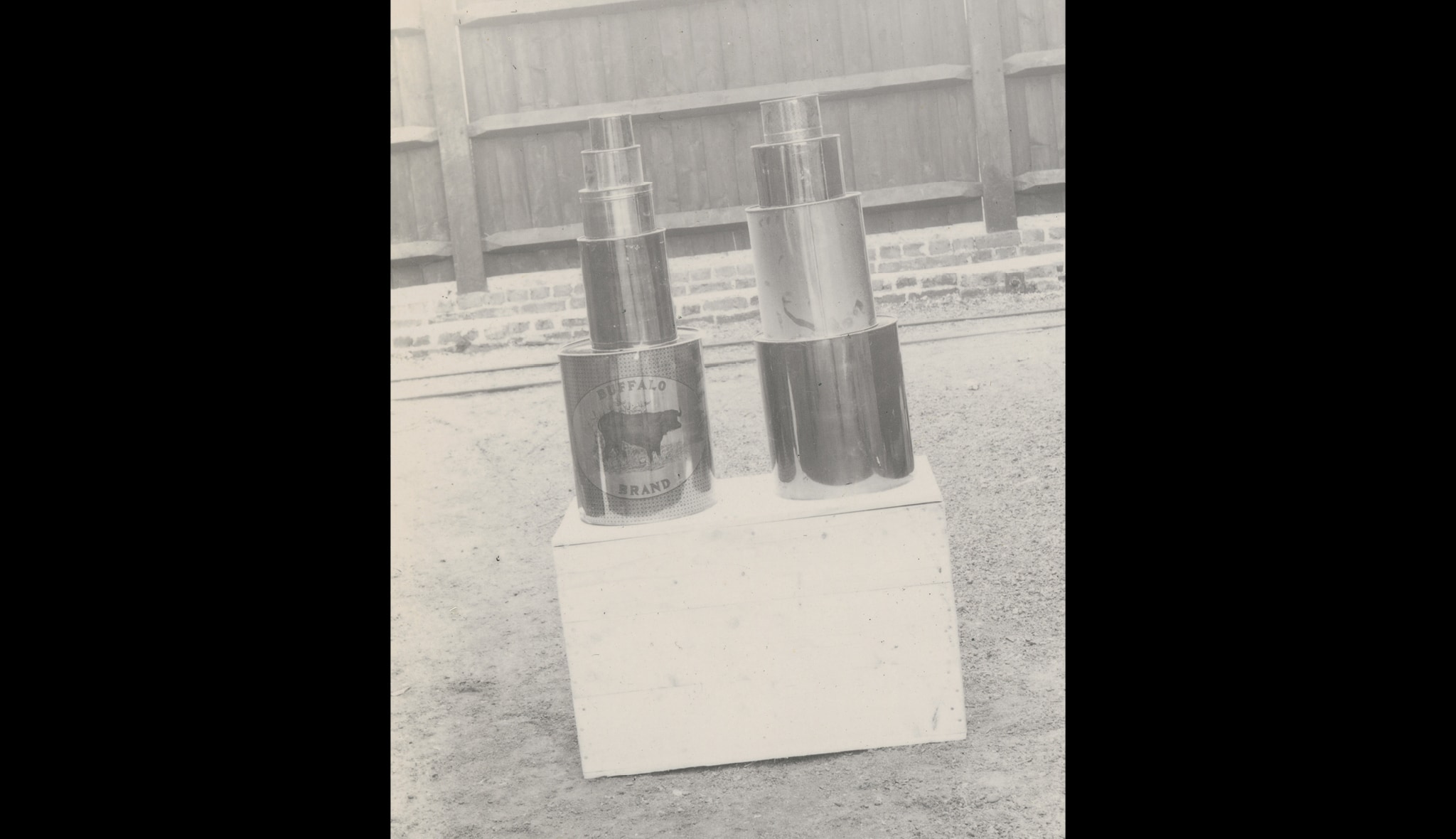
007 Tinned butter; tinned was often destined for hot climates or for shipboard. It continued to be produced in Cork, under the Clover Queen brand, for the West Indies market, until 2001.
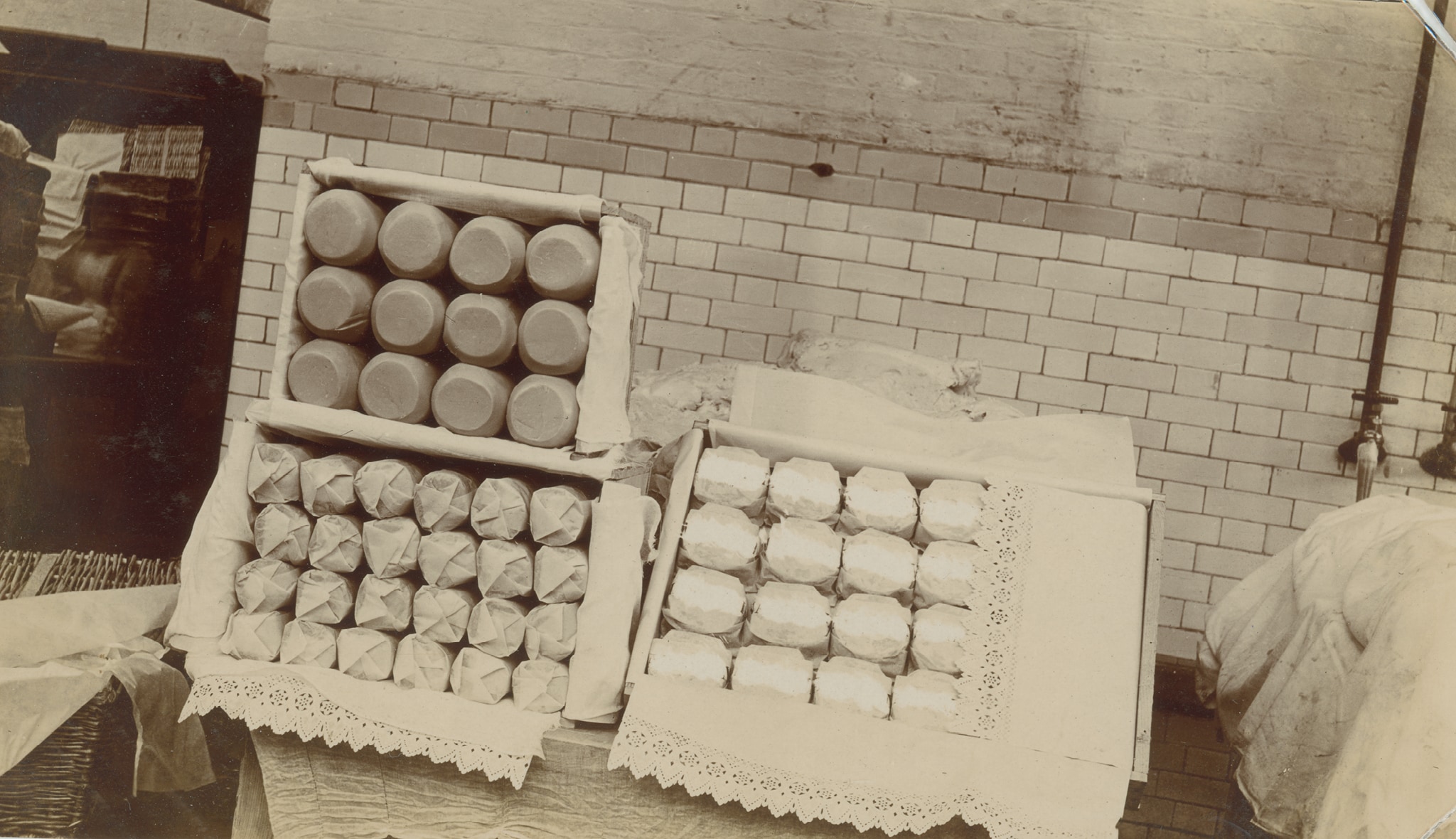
008 Rolls of butter, ornately packed.
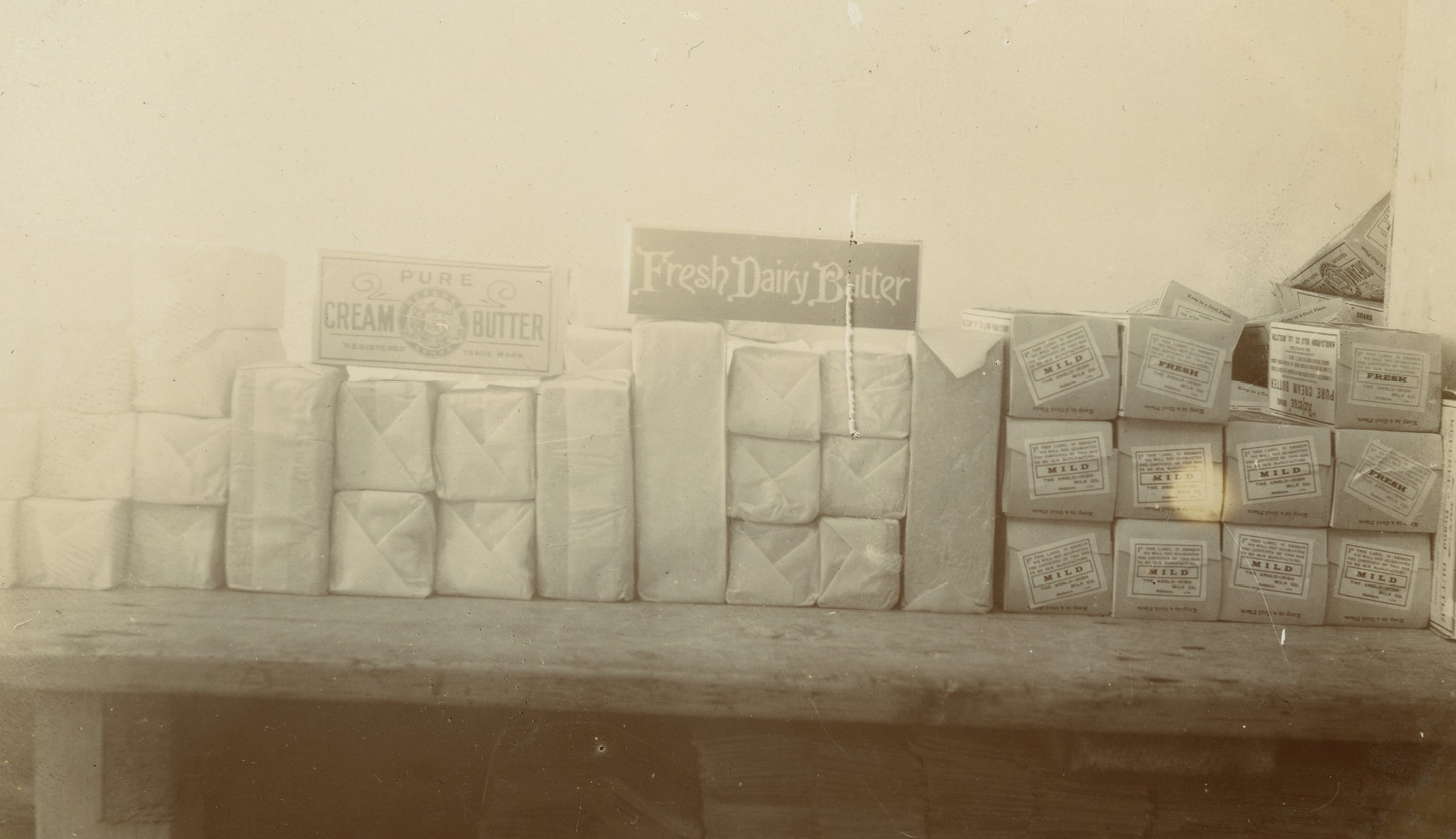
009 Packs of mild butter from the Anglo Irish Milk Company.
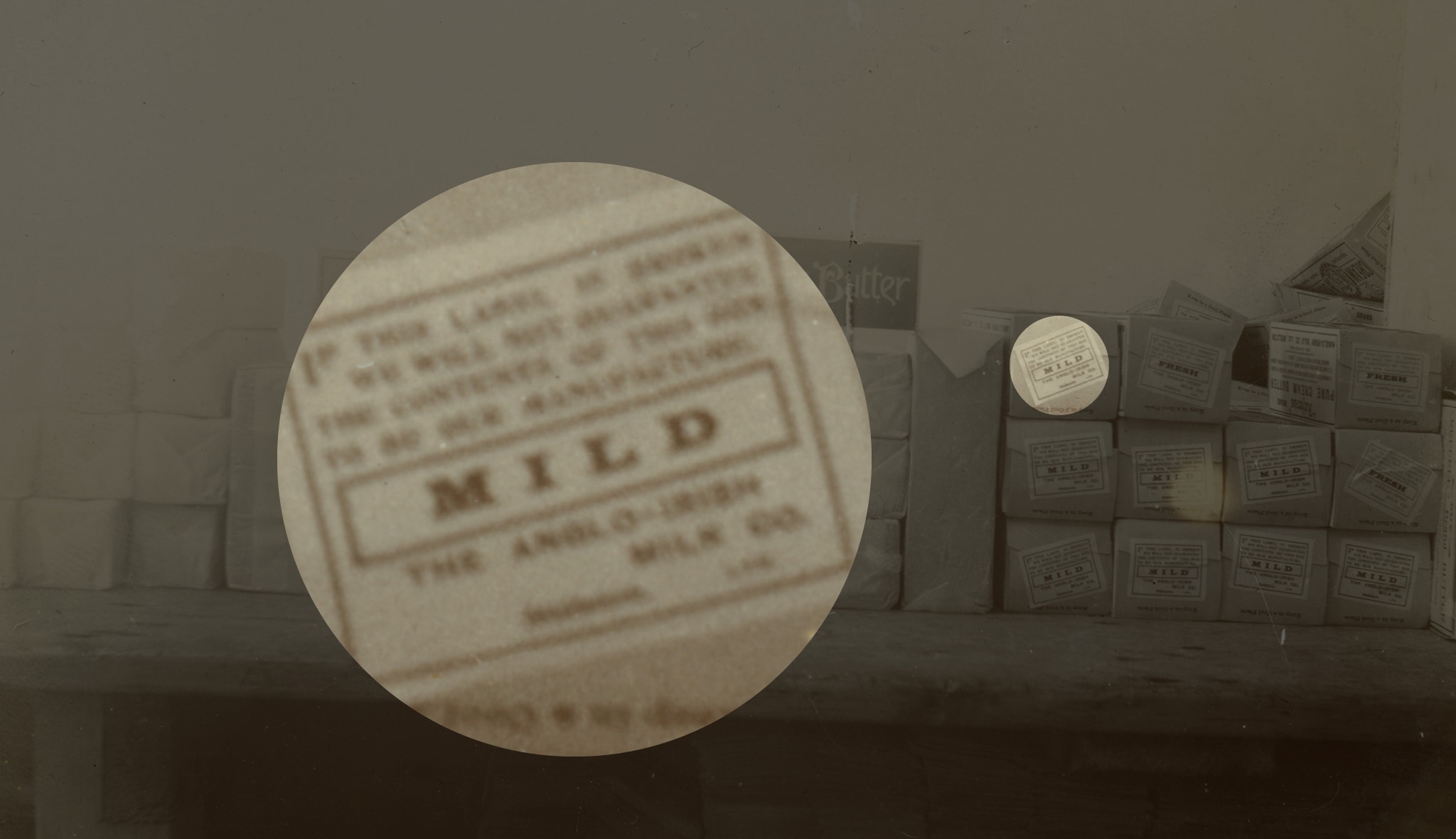
010 Detail of label from the Anglo Irish Milk Company; it seems to say that the company will not regard the product as theirs if the label is removed.
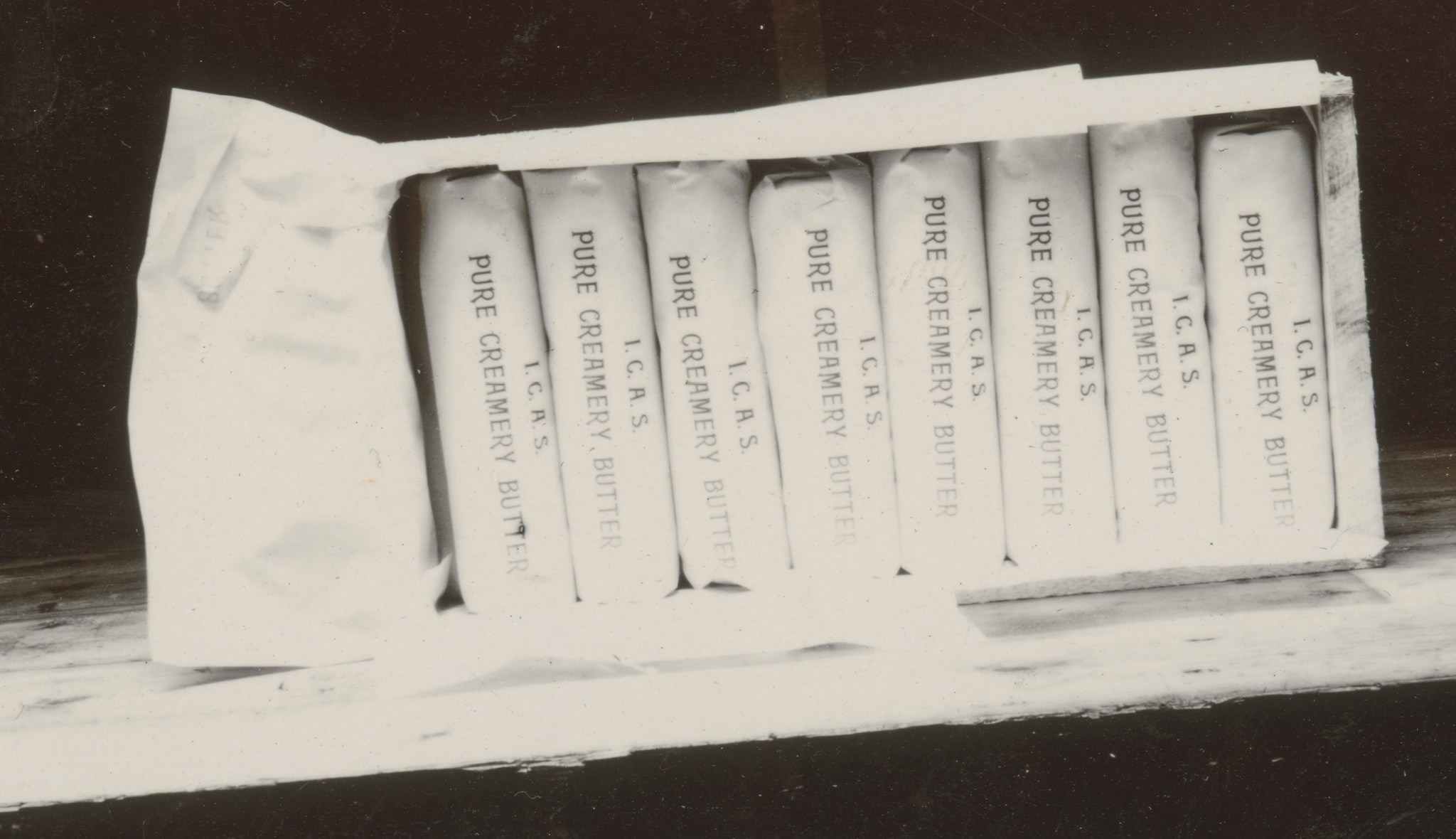
011 Butter from the Irish Co-operative Agency Society, an early marketing company for dairy co-ops established in 1893. The company did not thrive and went into liquidation in 1932.
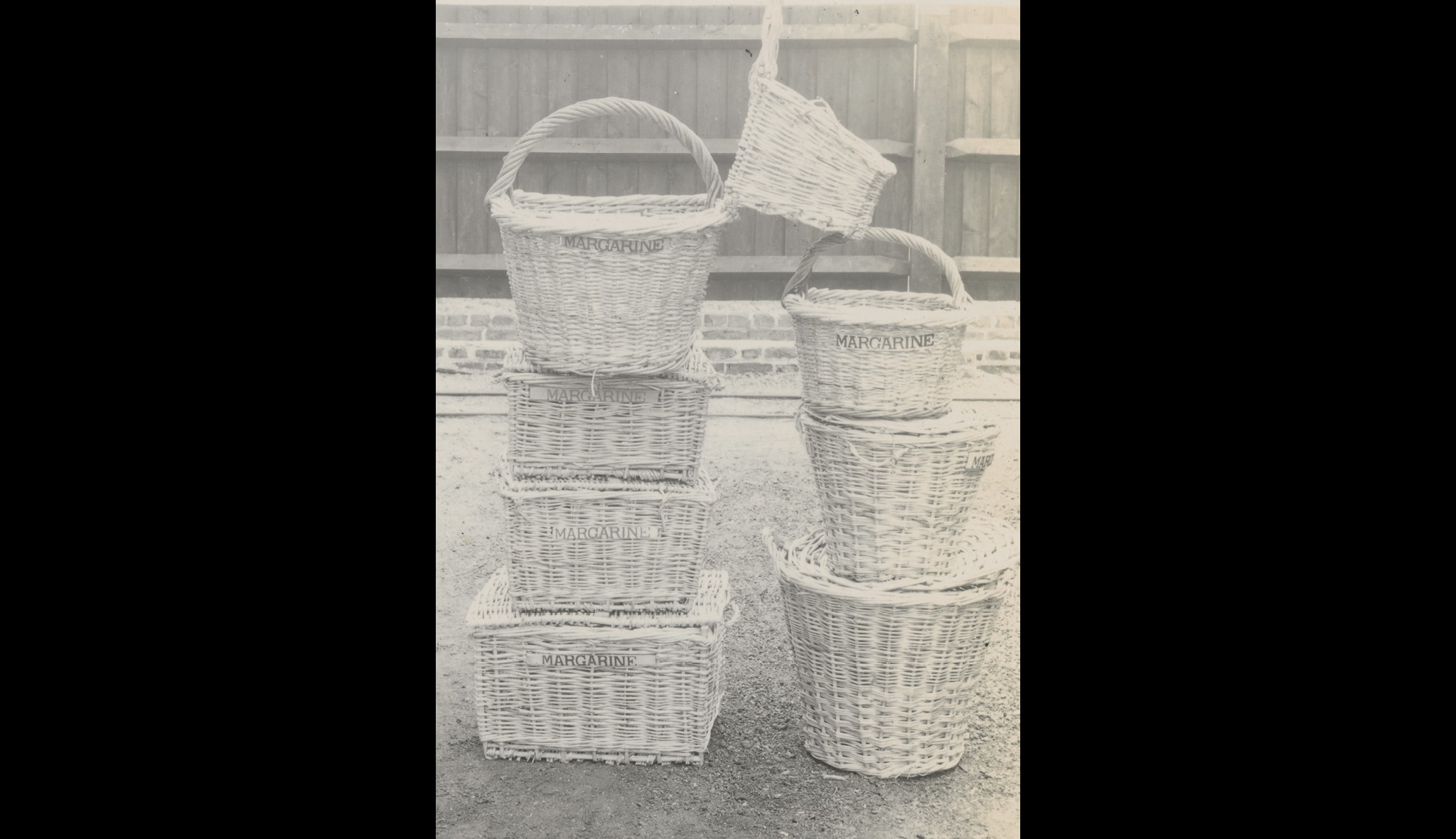
012 Baskets for margarine; it not clear why baskets, in particular, would have been used for margarine.